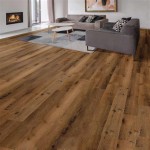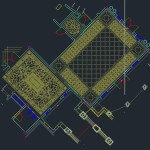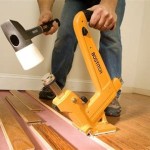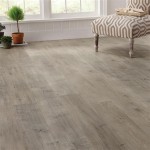Interlocking Gym Flooring Reviews: A Comprehensive Guide
Interlocking gym flooring has become a popular choice for both home gyms and commercial fitness centers. Its ease of installation, durability, and versatility make it an attractive option for a wide range of activities. However, with numerous products available on the market, selecting the right interlocking gym flooring can be a challenging task. This article provides a comprehensive overview of interlocking gym flooring, examining its benefits, types, key considerations when choosing flooring, and reviews of selected products and brands.
Interlocking gym flooring, often referred to as puzzle mats, consists of individual tiles or squares that connect to each other through a secure interlocking mechanism, typically resembling puzzle pieces. This design offers several advantages over traditional flooring options, including simplified installation, customizable layouts, and shock absorbency.
The primary material used in interlocking gym flooring is commonly high-density ethylene-vinyl acetate (EVA) foam or recycled rubber. EVA foam is lightweight, provides cushioning, and is often more affordable. Recycled rubber, on the other hand, offers superior durability, greater shock absorption, and is more resistant to wear and tear. The choice between the two materials depends on the intended use, budget, and desired level of performance.
Benefits of Interlocking Gym Flooring
One of the most significant advantages of interlocking gym flooring is its ease of installation. Unlike traditional flooring methods that require professional installation and specialized tools, interlocking tiles can be easily installed by the end-user. The interlocking mechanism allows for a seamless and secure connection between tiles, creating a stable and uniform surface. This self-installation capability can result in considerable cost savings, especially for larger spaces.
Another notable benefit is the inherent shock absorbency of interlocking flooring, particularly when made from EVA foam or recycled rubber. This cushioning effect helps to reduce the impact on joints during high-intensity workouts, minimizing the risk of injuries. This feature is particularly beneficial for exercises that involve jumping, running, or Olympic weightlifting. The shock absorbency also reduces noise levels, making it a suitable option for apartments or home gyms where sound transmission is a concern.
Interlocking gym flooring offers exceptional versatility. The modular design allows for customized layouts and easy modifications. Tiles can be easily rearranged or replaced as needed, which is particularly useful for adapting the gym space to different activities or equipment configurations. The portable nature of interlocking tiles also makes them suitable for temporary setups or outdoor use, such as for fitness classes or events.
Furthermore, interlocking gym flooring is relatively easy to clean and maintain. Most spills and stains can be easily wiped clean with a damp cloth or mild detergent. The non-porous surface of many interlocking tiles prevents the absorption of liquids, making them resistant to mold and mildew growth. Regular cleaning helps to maintain the appearance and hygiene of the flooring, extending its lifespan.
Types of Interlocking Gym Flooring
EVA Foam Interlocking Tiles: EVA foam tiles are a popular choice for home gyms and light commercial use. They are lightweight, affordable, and provide adequate cushioning for general fitness activities. However, EVA foam is less durable than recycled rubber and may not be suitable for heavy weightlifting or high-impact exercises. EVA foam tiles are typically available in various thicknesses and colors, allowing for customization of the gym space.
Recycled Rubber Interlocking Tiles: Recycled rubber tiles offer superior durability and shock absorption compared to EVA foam. They are ideal for commercial gyms, weightlifting areas, and high-intensity training facilities. Recycled rubber is more resistant to wear and tear, and can withstand the impact of heavy weights and equipment. These tiles are usually available in different thicknesses and densities to accommodate various fitness needs. Recycled rubber also offers excellent sound dampening properties.
Rubber/EVA Composite Tiles: These tiles combine the benefits of both recycled rubber and EVA foam. They typically consist of a rubber base for durability and shock absorption, and an EVA foam top layer for added cushioning and comfort. Composite tiles offer a good balance between performance, durability, and affordability. They are suitable for a wide range of fitness activities.
Specialty Interlocking Tiles: Some manufacturers offer specialty interlocking tiles designed for specific purposes. These may include tiles with enhanced grip for yoga or Pilates, tiles with integrated ramps for accessibility, or tiles with textured surfaces for added traction. These specialty tiles cater to specific needs and can enhance the functionality and safety of the gym space.
Key Considerations When Choosing Interlocking Gym Flooring
The intended use of the gym space is a critical factor in determining the appropriate type of interlocking flooring. For home gyms used primarily for general fitness activities such as bodyweight exercises, yoga, and light weightlifting, EVA foam tiles may be sufficient. However, for commercial gyms or areas dedicated to heavy weightlifting, recycled rubber tiles are a more suitable choice due to their superior durability and shock absorption. Consider the specific activities that will be performed in the space and select flooring that can withstand the demands of those activities.
The thickness of the interlocking tiles directly impacts their shock absorption and durability. Thicker tiles generally provide better cushioning and are more resistant to wear and tear. For high-impact activities or areas where heavy weights will be dropped, thicker tiles are recommended to protect the subfloor and minimize the risk of injuries. Consider the weight of the equipment and the intensity of the workouts when selecting the appropriate tile thickness.
The density of the interlocking tiles also plays a significant role in their performance. Denser tiles offer greater support and are more resistant to compression. For areas where heavy equipment will be placed or where heavy weightlifting will be performed, denser tiles are recommended to prevent indentation and maintain a stable surface. Consider the weight distribution of the equipment and the potential for compression when selecting the appropriate tile density.
The texture and surface finish of the interlocking tiles can affect traction and safety. Tiles with a textured surface provide better grip, reducing the risk of slips and falls. This is particularly important for activities that involve quick movements or changes in direction. Consider the type of exercises that will be performed and select tiles with a surface finish that provides adequate traction.
The ease of installation and maintenance is another important consideration. Interlocking tiles are generally easy to install, but some systems may be more user-friendly than others. Look for tiles with a secure interlocking mechanism that is easy to connect and disconnect. Also, consider the cleaning and maintenance requirements of the tiles. Tiles with a non-porous surface are easier to clean and more resistant to stains and odors.
The cost of interlocking gym flooring can vary significantly depending on the material, thickness, density, and brand. While EVA foam tiles are generally more affordable than recycled rubber tiles, they may not be as durable or offer the same level of performance. Consider your budget and prioritize the features that are most important to you. It is often more cost-effective to invest in higher-quality flooring that will last longer and provide better protection.
Warranty and customer support are important factors to consider when purchasing interlocking gym flooring. A reputable manufacturer should offer a warranty that covers defects in materials and workmanship. Also, consider the availability of customer support in case you have questions or issues with the product. Look for manufacturers with a proven track record of customer satisfaction.
Finally, the aesthetic appeal of the interlocking gym flooring can contribute to the overall atmosphere of the gym space. Tiles are available in a variety of colors, patterns, and textures, allowing you to customize the look and feel of the space. Consider the overall design of the gym and select tiles that complement the existing decor.
The selection of interlocking gym flooring requires careful consideration of several factors, including intended use, material, thickness, density, texture, installation, maintenance, cost, warranty, and aesthetics. By carefully evaluating these factors, individuals can choose the flooring that best meets their needs and provides a safe, durable, and aesthetically pleasing surface for their workouts.
Specific brand and product recommendations are provided below to illustrate the variety of options available and highlight the features that distinguish one product from another. These are not exhaustive, but serve as examples for informing consumer choices.
Disclaimer: Prices and availability of specific products may vary. It is advisable to conduct independent research and compare prices from different retailers before making a purchase. User reviews should also be consulted to gauge performance and durability from practical experience.

Reviews For Survivor Sportfloor Interlocking Isometric Orange 24 In X 0 3 Rubber Gym Weight Room Flooring Tiles Sq Ft 6 Pack Pg 1 The Home Depot

Reviews For Rubber King Pro Series Black 01 6 Mm 24 In W X L Interlocking Tile Box Of 10 40 Sq Ft Pg 1 The Home Depot

Greatmats Pebble Top Black 24 In X 3 4 Foam Interlocking Gym Floor Tile 38 75 Sq Ft Case Of 10 Peb34 The Home Depot

3 8 Inch Interlocking Rubber Tiles Black Color Tough And Durable

American Floor Mats Fit Lock Rubber Tiles Garage Gym Reviews

Gym Flooring Review Rubber Interlocking Tiles Home Garage Floor Direct

Gym Flooring Review Rubber Interlocking Tiles Home Garage Floor Direct

Interlocking Rubber Tile 10 Premium Color 8 Mm X 23x23 Inch

Reviews For Rubber Cal Eco Sport Interlocking Flooring Tiles Terra Cotta 3 4 In X 19 5 13 2 Sq Ft Pack Pg 1 The Home Depot

The Best Home Gym Flooring Options 2024 Garage Reviews
Related Posts








